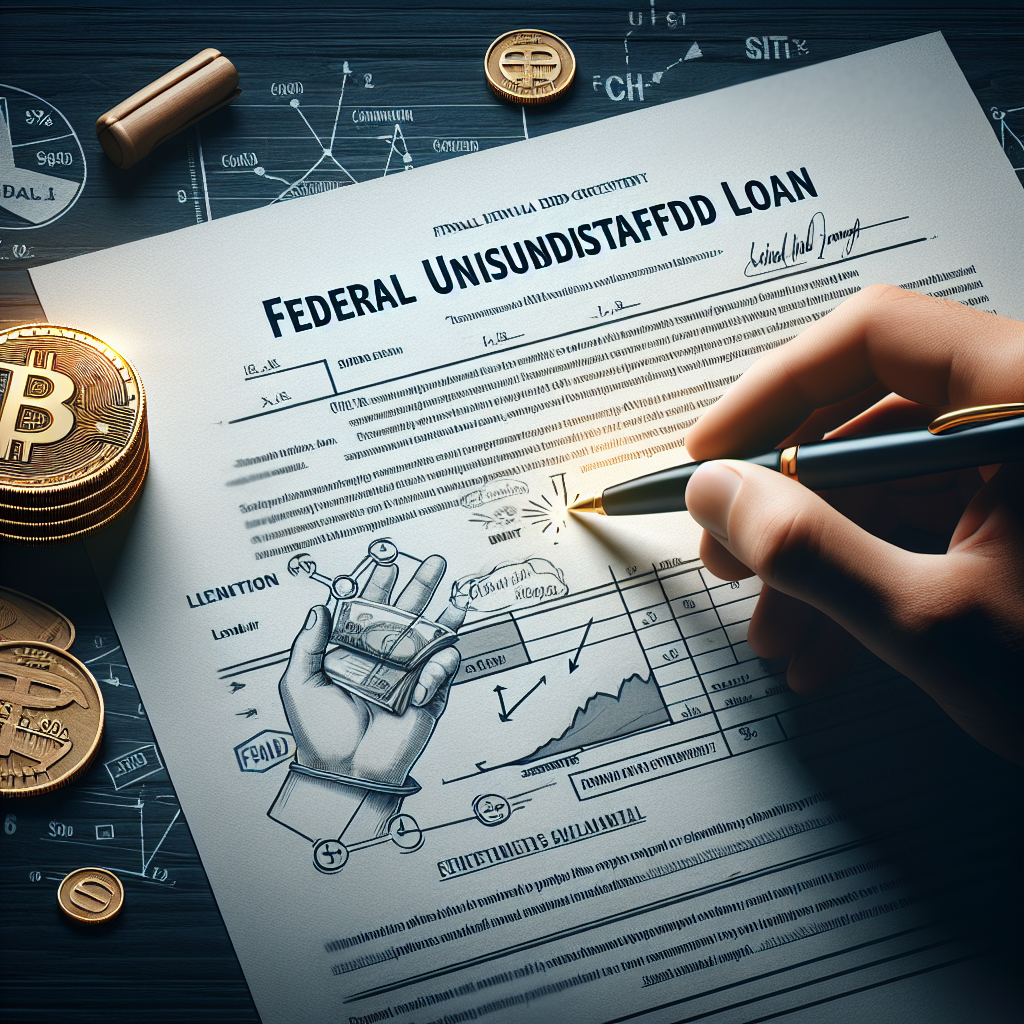
Federal unsubsidized stafford loan
The Federal Unsubsidized Stafford Loan: A Comprehensive Guide
When it comes to financing higher education, many students are overwhelmed by the different types of loans available. Among these options, the federal unsubsidized Stafford loan is a prominent choice that offers financial assistance for thousands of students each year. In this post, we will explore what federal unsubsidized Stafford loans are, their features, eligibility requirements, and repayment options.
What is a Federal Unsubsidized Stafford Loan?
A federal unsubsidized Stafford loan is a type of federal student loan that does not require the borrower to demonstrate financial need. Unlike subsidized loans, where the government pays the interest while the student is in school, with unsubsidized loans, interest accrues from the time the loan is disbursed. This means that students are responsible for all the interest that accumulates throughout the life of the loan, including while they are still in school.
Key Features of Federal Unsubsidized Stafford Loans
- Loan limits: The amount a student can borrow depends on their year in school and whether they are a dependent or independent student. Typically, the limits range from $5,500 to $20,500 per year.
- Interest rates: Rates for federal unsubsidized Stafford loans are fixed and set annually by the government, making budgeting easier for borrowers.
- Repayment terms: Borrowers have a grace period of six months after graduation or dropping below half-time enrollment before they must begin repayment.
- Eligibility: There is no requirement to demonstrate financial need, making these loans accessible to a wider range of students.
Eligibility Requirements
To qualify for a federal unsubsidized Stafford loan, students must meet certain criteria:
- Be enrolled at least half-time in an eligible degree or certificate program.
- Must be a U.S. citizen, national, or eligible non-citizen.
- Maintain satisfactory academic progress in your program of study.
- Complete the FAFSA (Free Application for Federal Student Aid) annually.
Applying for a Federal Unsubsidized Stafford Loan
The application process is straightforward and involves several steps:
- Complete the FAFSA: The first step is to fill out the FAFSA, which assesses your eligibility for federal student aid.
- Review your financial aid offer: After your FAFSA is processed, your school will provide you with a financial aid award letter detailing the funds you are eligible to receive, including the unsubsidized Stafford loan.
- Accept your loan: You must formally accept your loan offer through your school's financial aid office.
- Complete loan counseling: Borrowers are required to complete entrance counseling to ensure they understand their rights and responsibilities.
- Sign a Master Promissory Note (MPN): This legal document outlines the terms and conditions of the loan and signifies your agreement to pay back the loan in the future.
Understanding Interest Rates and Fees
Interest rates for federal unsubsidized Stafford loans are fixed for the life of the loan. For the 2023-2024 academic year, the interest rate for undergraduates is typically around 4.99%, while rates for graduate students may be higher. It's essential to remember that interest begins to accumulate as soon as the loan is disbursed.
Repayment Options
After graduation or when you drop below half-time enrollment, you will have a six-month grace period before you must begin repaying your federal unsubsidized Stafford loans. Borrowers can choose from various repayment plans to make the process manageable:
- Standard Repayment Plan: Fixed payments over ten years.
- Graduated Repayment Plan: Payments start low and gradually increase every two years.
- Extended Repayment Plan: Allows borrowers to extend their repayment term up to 25 years.
- Income-Driven Repayment Plans: Payments based on your income and family size, with possible forgiveness after 20 to 25 years.
Loan Forgiveness and Cancellation
Students may be eligible for loan forgiveness under certain circumstances, particularly if they work in public service or teach in low-income schools. It's crucial to know these options, as they can significantly impact the total amount a borrower repays over time.
Managing Your Federal Unsubsidized Stafford Loan
Once you enter repayment, managing your federal unsubsidized Stafford loan becomes vital for your financial health. Here are some tips:
- Keep track of your loans: Know how much you borrowed, your interest rates, and your repayment terms to stay organized.
- Make payments on time: Setting up automatic payments can help ensure you never miss a payment, which can affect your credit score.
- Communicate with your loan servicer: If you’re facing financial hardship, reach out to your loan servicer promptly to explore options.
- Consider making interest-only payments: If you can afford it, making interest payments while in school can help reduce the overall cost of the loan.
Conclusion
In summary, the federal unsubsidized Stafford loan offers a viable solution for many students seeking to finance their education. Understanding the features, eligibility requirements, repayment options, and strategies for managing this type of loan can make a significant difference in navigating your financial future. Students must take the time to educate themselves on their options and responsibilities to make informed decisions regarding their higher education funding. As you embark on this journey, remember that financial aid is just one piece of the puzzle; planning and budgeting will empower you to achieve your academic and career goals.
"Education is the most powerful weapon which you can use to change the world." - Nelson Mandela
Additional Resources
For more information on federal unsubsidized Stafford loans and other financial aid options, you can check out the following resources:
- Federal Student Aid Website
- National Association of Student Financial Aid Administrators
- Consumer Financial Protection Bureau
Being well-informed about federal student loans and the broader landscape of financial aid can help you make the most of your educational opportunities and set you on the path to success.
By Guest, Published on October 8th, 2024